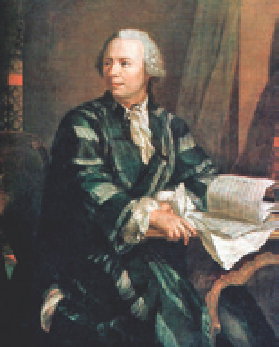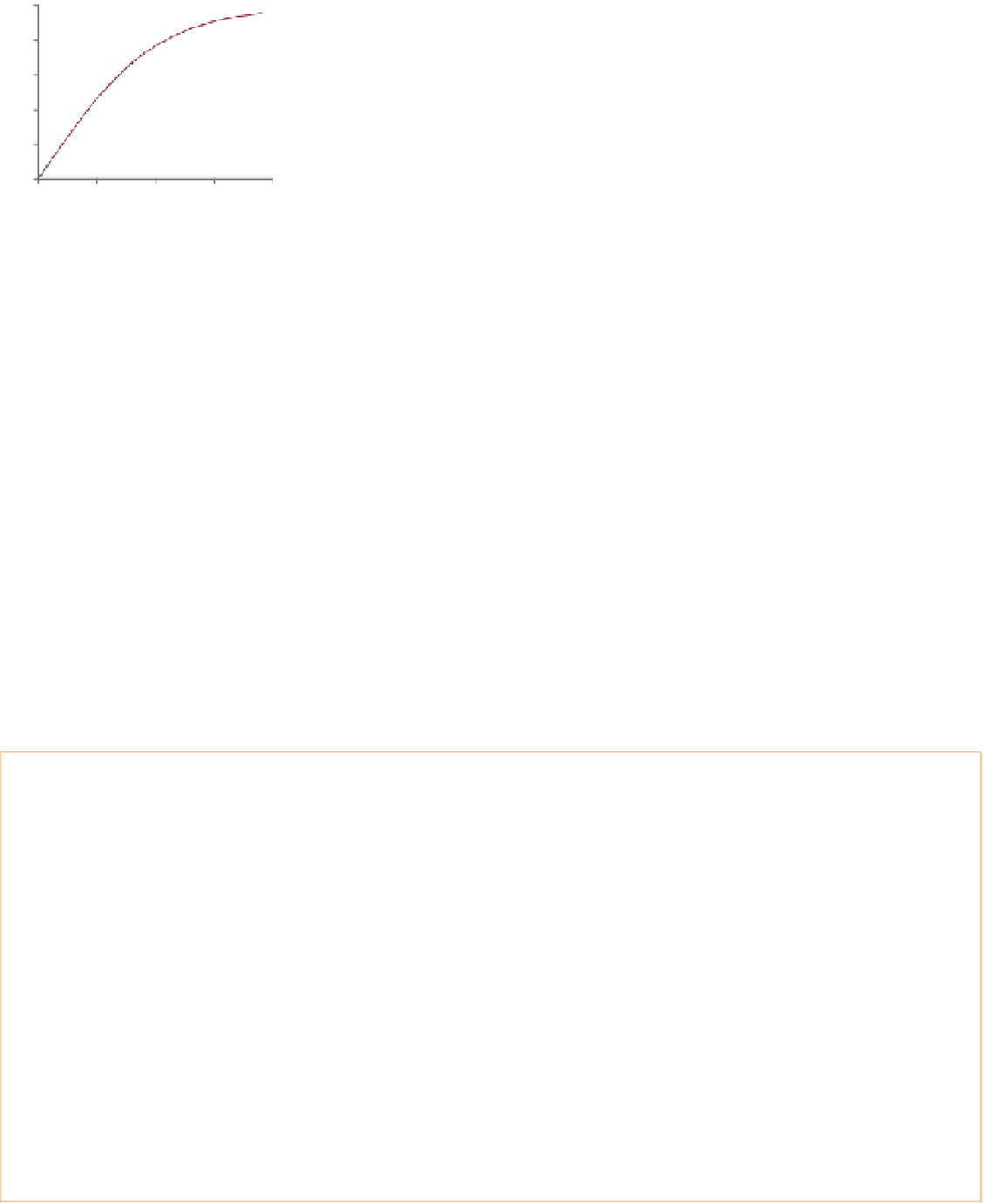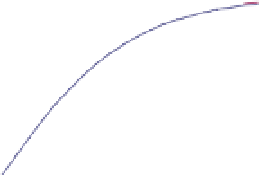Information Technology Reference
In-Depth Information
materials. Polish American mathematician Stanislaw Ulam (
B.5.5
), who, along
with Edward Teller, is credited for devising a workable mechanism for the
hydrogen bomb, came up with the idea of using many random experiments
to find an approximate answer to the problem. He recalled his inspiration as
follows:
10
Euler method
Exact method
8
6
4
The first thoughts and attempts I made to practice [the Monte Carlo
method] were suggested by a question which occurred to me in 1946 as I
was convalescing from an illness and playing solitaires. The question was
what are the chances that a Canfield solitaire laid out with 52 cards will
come out successfully? After spending a lot of time trying to estimate them
by pure combinatorial calculations, I wondered whether a more practical
method than “abstract thinking” might not be to lay it out say one hundred
times and simply observe and count the number of successful plays. This
was already possible to envisage with the beginning of the new era of fast
computers, and I immediately thought of problems of neutron diffusion and
other questions of mathematical physics, and more generally how to change
processes described by certain differential equations into an equivalent
form interpretable as a succession of random operations. Later [in 1946],
I described the idea to John von Neumann, and we began to plan actual
calculations.
3
2
0
0
0.5
1
1.5
2
time,s
Fig. 5.3. Comparison of a numerical
solution of a simple differential equation
obtained using Euler's method with the
exact analytical solution. If we use the
Corrector-Predictor method, which is
much more accurate than the simpler
Euler method, we obtain results that are
almost indistinguishable from the exact
solution.
Von Neumann chose the code name Monte Carlo for the new technique in
reference to the famous casino where Ulam's uncle used to like to gamble.
The first unclassified paper on Monte Carlo methods, authored by Nicholas
Metropolis and Ulam, was published in 1949.
We can use the Monte Carlo method to find an approximate value of π in
the following way. Imagine we place a dartboard inside a square as shown in
Figure 5.4
. If we throw darts randomly at the square, the number of darts that
land within the circle is proportional to the area of the circle. By comparing the
B.5.4. Leonhard Euler (1707-83) was a Swiss mathematician and physicist. Euler was born in
Basel, the son of Paul Euler, a pastor of the Reformed Church, and a friend of Johann Bernoulli,
then Europe's foremost mathematician. Bernoulli recognized the young Euler's genius and con-
vinced him to pursue mathematics rather than enter the church. At the age of thirteen, Leonhard
was a student at the University of Basel and received his Master of Philosophy in 1723 for his dis-
sertation that compared the philosophies of Descartes and Newton. After he was unable to secure
a university position in Basel, in 1726 Euler was offered a post at the Russian Academy of Sciences
in St. Petersburg. In 1741 he took up a position at the Berlin Academy and spent a very creative
twenty-five years in Germany before returning to St. Petersburg.
Euler's mathematical abilities were supplemented by his having a photographic memory. He
could recite Virgil's
Aeneid
from beginning to end and could even remember the first and last lines
on each page of his edition of the topic. Euler worked in almost all areas of mathematics - geome-
try, calculus, algebra, trigonometry, and number theory - as well as in physics and astronomy and
he introduced and popularized many of the notational conventions in mathematics that we still
use today. Euler was the first to write
f
(
x
) to denote the function
f
applied to the argument
x
, as
well as the modern notation for the trigonometric functions such as sine, cosine, and tangent; the
letter
e
for the base of the natural logarithm; the Greek letter Σ for summations; and the letter
i
for complex numbers. Euler is also responsible for what physicist Richard Feynman called “the
most remarkable formula in mathematics,”
B2
Euler's identity:
e
iπ
+ 1 = 0.




Search WWH ::

Custom Search